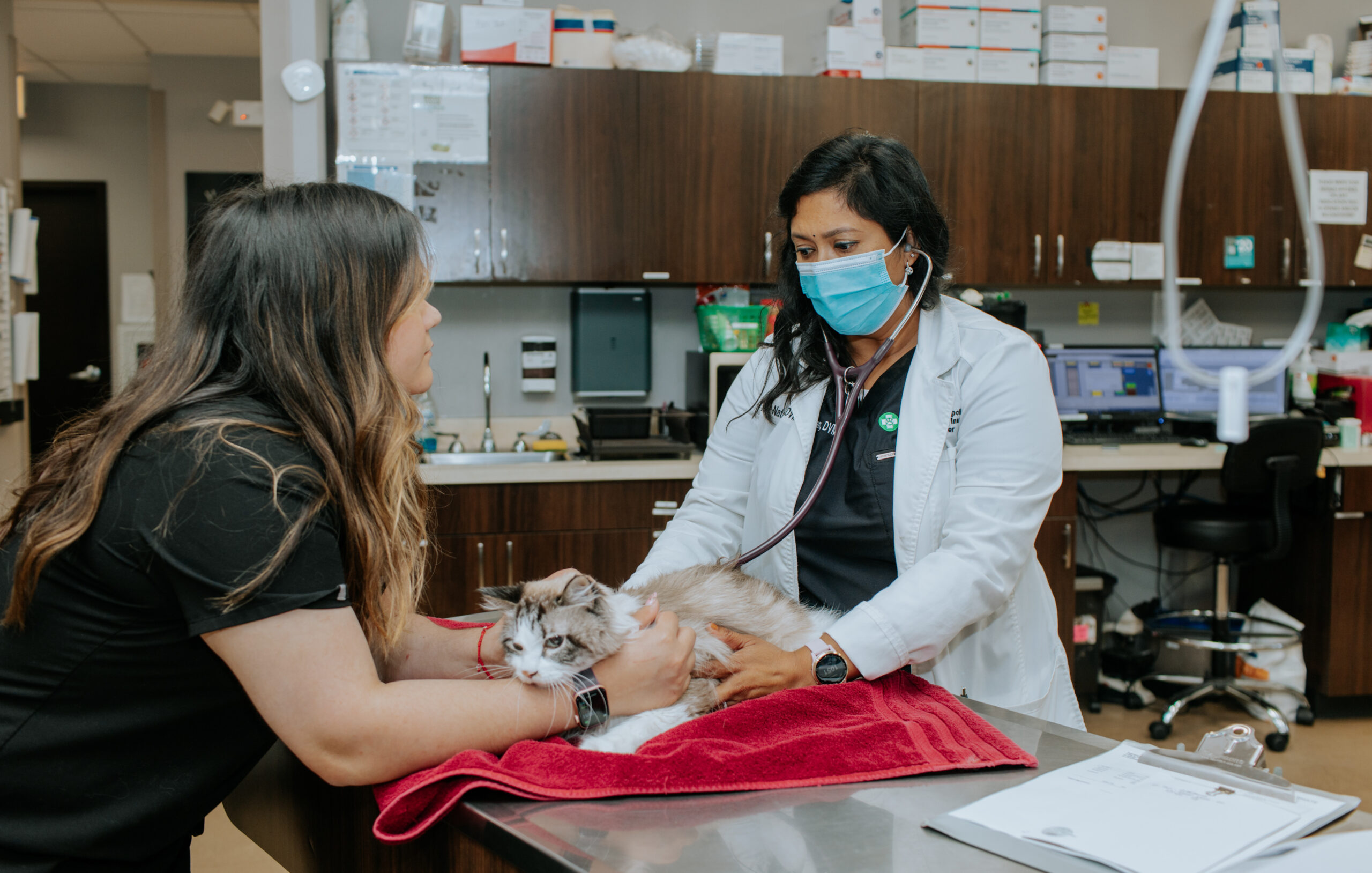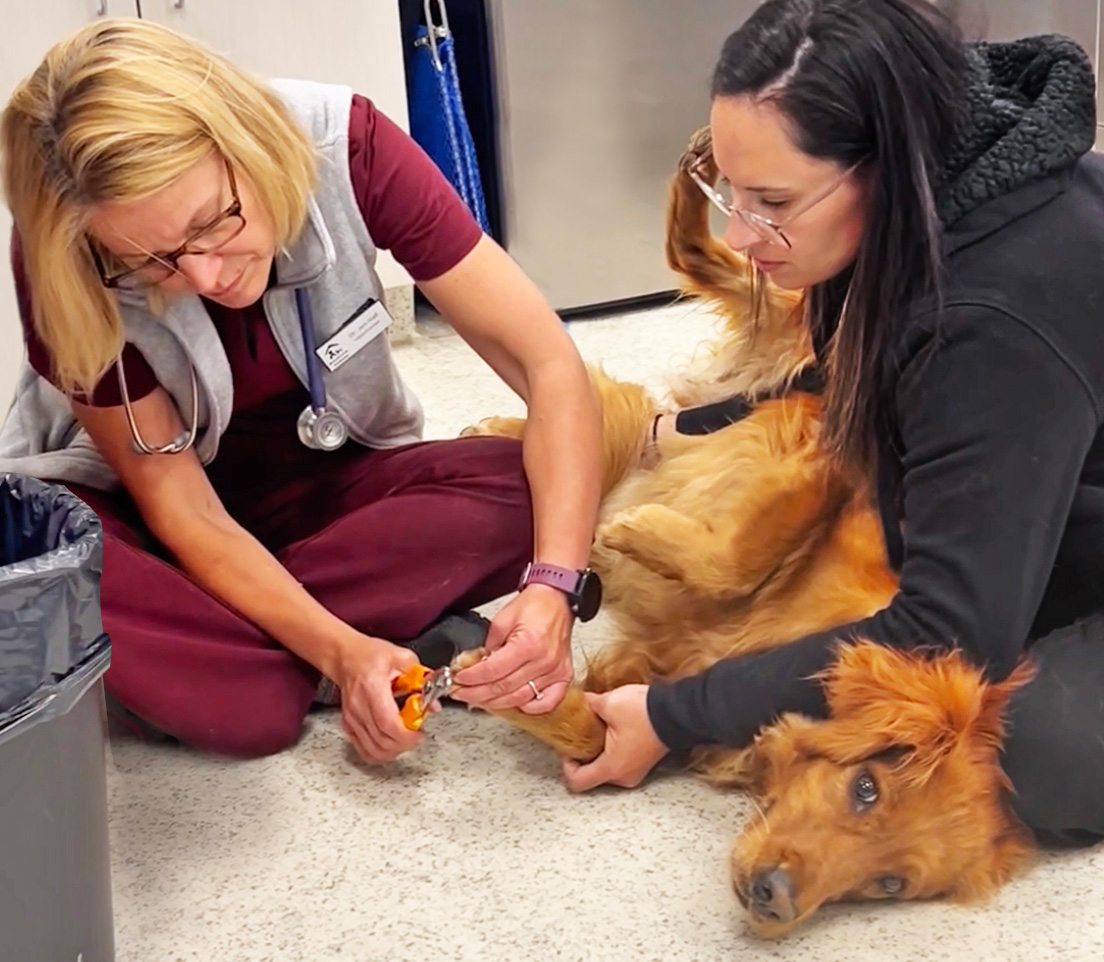Most Common Emergency Surgeries Performed at animal emergency care bellingham Centers
Everything About Vet Surgical Procedure: Recognizing the Relevance of Professional Care for Your Pets
Vet surgical procedure is a crucial element of animal health care. It includes different procedures, from routine elective surgeries to urgent interventions. Understanding the intricacies of these surgical procedures can help pet owners make notified choices. The prep work, execution, and healing stages are vital for making sure the wellness of pets. With appropriate knowledge, owners can navigate the intricacies of vet treatment. What variables should be considered prior to a family pet undertakes surgical treatment?
Kinds Of Vet Surgeries
When a family pet needs medical intervention, understanding the numerous kinds of veterinarian surgeries can assist pet proprietors make educated choices. Veterinary surgical procedures can be broadly classified into three main kinds: elective, immediate, and emergency surgeries. Optional surgical treatments, such as spaying or neutering, are planned procedures that are not immediately deadly. Immediate surgical treatments, like those for international body removal, must be performed soon yet are not lethal in the moment. Emergency situation surgical treatments, such as those attending to extreme trauma or inner bleeding, are critical and require prompt attention.Additionally, surgical treatments can vary in intricacy, ranging from minimally intrusive laparoscopic procedures to extra extensive open surgical treatments. Each sort of surgical treatment carries its own threats and recuperation procedures. Comprehending these categories allows animal owners to participate in significant conversations with vets, bring about far better outcomes for their cherished family pets.
Getting ready for Your Animal's Surgical procedure
Getting ready for a pet's surgery includes a comprehensive checklist to ensure all essentials are covered. Efficient interaction with the veterinarian is important for understanding the procedure and any necessary pre-operative steps - tplo surgery for dogs. Furthermore, having clear post-operative treatment instructions will assist proprietors supply the finest support for their recouping pet dogs
Pre-Surgery List Fundamentals
Assuring a smooth surgical experience for a family pet requires mindful prep work and focus to information. A pre-surgery checklist is vital for pet dog proprietors to adhere to. Verifying the arranged surgical treatment date and time is crucial. Proprietors should likewise verify that their pet has actually fasted according to the veterinarian's instructions, normally for 8-12 hours before surgical treatment. Gathering necessary clinical documents, consisting of inoculation background, is essential for the veterinarian's evaluation. It is likewise recommended to prepare a comfortable space at home for the family pet's recuperation after surgery. Owners should have a strategy for transport to and from the vet clinic, making sure that the animal is protected and comfy throughout the trip. Complying with these actions can greatly boost the medical experience.
Connecting With Your Vet

Effective communication with the veterinarian is essential for a successful surgical experience for pets. Proprietors should be prepared to review their animal's clinical history, including any type of pre-existing conditions, drugs, and allergies. This information aids the vet examine threats and tailor the surgical plan accordingly. Furthermore, pet owners need to ask concerns pertaining to the treatment, anesthesia, and anticipated end results to ensure they completely understand the process. Clearing up any uncertainties can relieve anxiety for both the animal and the proprietor. It is likewise vital to communicate any behavioral changes or concerns observed in the family pet leading up to the surgical procedure. Inevitably, clear dialogue cultivates depend on and collaboration, making sure that family pets receive the finest feasible treatment throughout their surgical journey.
Post-Operative Care Directions
After going over the procedure with the veterinarian, pet dog owners should concentrate on post-operative treatment instructions to assist in a smooth healing for their pets. These directions usually consist of monitoring the surgical website for indications of infection, such as inflammation or discharge. Pet dogs might need to be kept one's cool and constrained to avoid extreme movement that can interrupt healing. Discomfort monitoring is crucial, so owners should comply with the vet's assistance on carrying out medicines. Furthermore, dietary restrictions might be encouraged to stay clear of gastrointestinal distress. Regular follow-up consultations are essential to assure proper healing and resolve any concerns. By adhering to these post-operative treatment guidelines, pet dog owners can substantially add to their family pet's recovery and general well-being.
The Surgical Refine Explained
The surgery for pets includes important actions that assure their safety and recuperation. Pre-surgery preparations are important for reducing risks, while post-operative care standards play a vital role in advertising healing. Recognizing these parts helps animal proprietors navigate the medical experience better.
Pre-Surgery Preparations
Before a family pet goes through surgical treatment, a number of vital preparations need to happen to guarantee a risk-free and effective procedure. A thorough veterinary exam is crucial to evaluate the pet's general health and wellness and recognize any type of possible risks. This might consist of blood tests, imaging, or various other diagnostics. The vet will likewise talk about anesthetic choices customized to the animal's details demands. Furthermore, pet proprietors are commonly instructed to withhold food and water for a specified time prior to surgical treatment to decrease the danger of problems during anesthetic. It is essential for owners to supply a total case history, including any medicines or allergies, guaranteeing the surgical team has all essential details. Proper interaction and adherence to pre-surgery standards can considerably improve the end result of the procedure.
Post-Operative Care Standards
Proper post-operative treatment is essential for making certain a pet dog's recovery following surgical treatment. After the procedure, animals should be monitored very closely for any indicators of difficulties, such as excessive bleeding, swelling, or uncommon habits. It is essential to adhere to the veterinarian's instructions concerning medicines, consisting of pain relievers and anti-biotics. Animals must be kept in a quiet, comfy environment to minimize stress and anxiety and promote healing. Restricting task is crucial; short, leashed walks may be essential, yet leaping or running must be stayed clear of. Regular follow-up consultations ought to be arranged to assess the healing procedure. In addition, the surgical website must be kept clean and completely dry, with any type of indications of infection reported to a vet quickly. Abiding by these standards improves recuperation outcomes.
Anesthetic and Discomfort Monitoring
Efficient anesthesia and pain monitoring are important parts of veterinary surgery, ensuring that pet dogs continue to be comfy and risk-free throughout the procedure. Veterinarians assess each family pet's private needs, thinking about elements such as age, weight, health condition, and the sort of surgical procedure being performed.Anesthesia methods commonly consist of a combination of pre-anesthetic drugs, induction representatives, and inhalant anesthetics, permitting specific control over the pet's level of awareness. Tracking throughout surgical treatment is crucial; vets constantly observe vital signs to address any type of prospective get more info complications promptly.Pain monitoring techniques may involve opioids, non-steroidal anti-inflammatory medications (NSAIDs), and regional anesthetics, customized to the family pet's specific situation. This diverse method helps lessen discomfort and promotes a smoother medical experience. By focusing on effective anesthetic and discomfort administration, vet experts enhance the total well-being of pets going through surgeries, ensuring they receive the highest criterion of treatment.
Post-Operative Care and Healing
Following surgical procedure, the focus shifts to post-operative treatment and healing, which is necessary for making sure a pet's risk-free return to normal activities. During this period, animals need a peaceful, comfy environment to help recovery. Owners ought to very closely check their animals for any signs of pain or uncommon behavior.Veterinary guidelines often include specific directions connected to drug administration, wound care, and nutritional adjustments. It is crucial to stick to these suggestions to reduce difficulties and advertise healing. Pet dogs might need to be limited from strenuous tasks, such as running or jumping, throughout their healing period (canine tplo surgery).Regular follow-up appointments with the veterinarian permit surveillance of the family pet's progress and prompt adjustments to the treatment plan. Supplying emotional support and friendship can also improve a family pet's recuperation experience, assisting to alleviate anxiety and anxiety. Overall, attentive post-operative treatment plays a considerable role in accomplishing an effective recovery
Acknowledging Problems After Surgery
How can family pet proprietors recognize problems after surgery? Understanding of certain indicators is essential for ensuring the well-being of pet dogs during recovery. Usual signs consist of excessive swelling, soreness, or discharge at the surgical site, which might represent infection. In addition, consistent discomfort, shown by whining or reluctance to relocate, need to trigger instant attention. Adjustments in cravings or water consumption can also indicate difficulties; a reduction in these actions might signal pain or distress.Moreover, pet proprietors ought to monitor their family pets for any type of uncommon habits, such as sleepiness or problem breathing, as these can be signs of significant concerns. Vomiting or looseness of the bowels complying with surgical procedure may call for urgent veterinary assessment. Identifying these complications early can considerably influence an animal's recovery process, emphasizing the significance of caution and timely interaction with a vet for any worrying signs.
The Function of Vet Experts in Surgical Treatment
Vet professionals play a vital function in ensuring the security and success of surgeries for family pets, particularly following surgical treatment when monitoring and care are paramount. These experts include veterinarians, vet specialists, and support personnel, all of whom add specialized abilities to the surgical process.Before surgical treatment, vets conduct thorough evaluations to examine the pet dog's health, guaranteeing that any kind of underlying conditions are taken care of. Throughout the procedure, the medical group provides anesthetic, maintains clean and sterile environments, and monitors essential indications, very important for decreasing risks.Post-operative treatment is equally significant; veterinary professionals observe for complications, handle discomfort, and overview proprietors on recovery methods. Their know-how allows them to identify early indications of distress or infection, making certain prompt treatment. Eventually, the joint efforts of veterinary specialists in medical treatment promote a secure setting, promoting the health of pets throughout the surgical journey.

Regularly Asked Concerns
Exactly how Do I Pick the Right Veterinary Doctor for My Animal?
Choosing the best vet surgeon entails looking into certifications, reading evaluations, and assessing the center's environment. It is vital to assess the doctor's experience with specific procedures and their communication design when choosing.
What Prevail Misconceptions About Vet Surgeries?
Usual misconceptions about vet surgical treatments include beliefs that they are constantly risky, unnecessary, or for emergency situations. Several family pet owners take too lightly the advantages of preventative procedures and the skill associated with vet surgical care.
Exactly How Much Will My Pet dog's Surgery Price?
The expense of a pet's surgical treatment can vary significantly based on elements such as the sort of procedure, the veterinarian's experience, and geographic place (canine tplo surgery). Generally, costs vary from a couple of hundred to several thousand bucks

Can My Family Pet Consume Prior To Surgical Procedure?
Before surgical treatment, it is typically suggested that animals avoid consuming for a certain duration. This fasting helps in reducing the threat of difficulties during anesthetic. Proprietors need to consult their vet for precise guidelines tailored to their animal's requirements.
What happens if My Pet Dog Has Pre-Existing Health And Wellness Issues?
When a pet dog has pre-existing health and wellness conditions, it's essential for the vet to analyze these variables prior to surgical procedure. This evaluation guarantees appropriate safety measures are taken, reducing risks and optimizing the pet dog's total safety and security throughout the treatment.